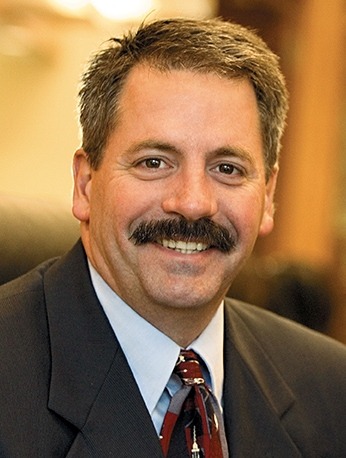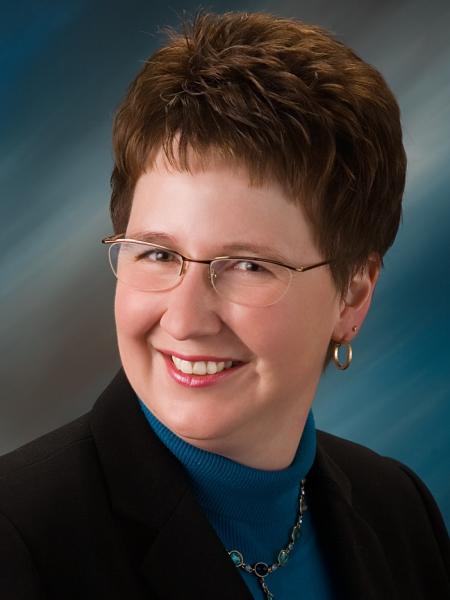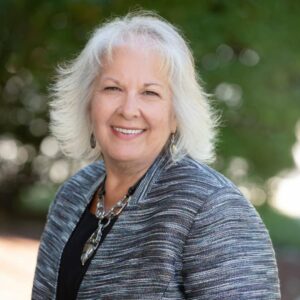Renovating skilled nursing facilities: Adjusting the property and upgrading the culture
Successfully implementing cultural change in a skilled nursing facility begins with visionary leaders who recognize the inherent link between physical environment and the delivery of person-centered care. Even the most impressive and creative renovation will fail to make a significant positive impact on resident care if a similar adjustment in mindset doesn’t take hold within the culture. If you change the facility without changing the ethos, your residents will be missing out on the benefits and value both can provide together.
Many skilled nursing facilities are making the switch from a medical model to the person-centered model that is so highly desired by residents and their families. But, in order to successfully accomplish this shift, a leader’s vision must include both facility adjustments and internal process revisions that focus on new practices in resident care delivery. Let’s explore how to create an environment that promotes and sustains resident autonomy, individualized care and positive outcomes.
LEADING CHANGE
Every seasoned leader knows that guiding change is a challenge that takes careful consideration–and renovating a facility and culture is no different.
It is important for staff to understand the vision for the changes and why person-centered care is so important. It is vital they grasp the benefits residents will receive and how that impacts the sustainability of the business and their careers. As the specific adjustments are being considered, it is essential to get the input and buy-in of staff, management, residents and families. If the changes that are being made are not workable and efficient for staff, they’ll revert back to their old ways and derail the values that are being pursued. For example, one renovation that we helped design included a significant change in the nurses’ station, making it more discreet. However, buy-in had not been achieved and training had not been effective. A year later, a de facto nursing station (and eyesore) had been created.
In our experience, we’ve found six elements critical in successful facility and cultural renovations:
- The effort has strong buy-in at the top. Senior leaders support the initiative and understand both the costs and benefits. Executives lead by example through day-to-day behaviors and decisions.
- All employees are centered on common values. Employees have a clear understanding of where they are in strategic terms–-and where they want to be. They have defined a model, complete with clear strategies for how to close any gaps. All divisions, teams and individuals know their parts and feel committed to the desired results.
- Change initiatives are team-driven. Team building reinforces individual development and produces real change in the culture.When a group of people starts functioning more effectively, change momentum is underway and the odds for success are improved.
- Skills-based training is provided. As part of the new employee orientation process, new staff members receive both skills-based training and a clear description of the vision and mission. Employee training ensures concepts and language are understood by everyone. Cross-training creates support for change by providing skills that allow people to contribute and “challenge up.”
- Initiatives are measured. Successful change initiatives use clearly defined metrics with which to gauge the degree of success. Accountability is present to ensure that proper measures are taken to effect necessary changes.
- Management sticks to the plan. Successful change initiatives take time to be fully enacted. Research shows it can often take at least three years for change to take root fully and to demonstrate a sustainable cultural shift. Be persistent, but patient.
FACILITY CHANGES THAT MAKE A DIFFERENCE
As you seek to adjust your culture to be more person-centered, be certain that the physical adjustments you implement will make a true impact. On a recent visit to a renovated facility, we saw a resident enjoying a newly created place to rest on a previously long, uninterrupted corridor. This change made a difference in her quality of life. Understanding what changes residents want and need, and creating space that accommodates those needs, is pivotal.
Enhancing the entrance sets the stage for people’s interaction on and expectation of your property. Is it inviting? Does it make everyone feel welcome? Entrance canopies can provide for covered loading and unloading in any type of weather. Power-assisted entrances are friendly to all levels of mobility. To complete the new mindset, be sure to designate a receptionist or greeter to ensure a friendly face is ready for every engagement.
Corridors provide great opportunities to freshen up a facility and provide a more person-centered experience. Installing handrails on both sides and providing resting spots in long corridors gives assistance to those in need. Making sure the rails are ergonomic and attractive will make them a valued resource to residents and help enhance the visual appearance of the hallway.Installing corner guards and maintaining the finishes can prevent unsightly wear from walkers and wheelchairs. Age-appropriate artwork and seasonal decorations often are appreciated additions that stimulate conversation and memory in these settings.
Recently, dining areas have seen some of the most drastic changes to enhance person-centered care at skilled nursing facilities. Create small, intimate dining experiences with bistros or areas that provide a home-like feel. Also, create space that offers options like buffet style, sit-down service, table side service and even room service. And, be sure residents have options of when and what they eat. You can create a great dining space, but if the staff doesn’t create a rich experience, then you’re likely to have an underutilized area.
Common areas provide a myriad of opportunities for improving the lives of residents and their families. These areas can be enhanced to allow people to enjoy specific activities and engage in community-building endeavors. Small, stand-alone libraries provide a place not only to read, but also to visit with others in a more intimate setting. Living rooms and parlors also can serve this purpose. But, while it is important to create space for dancing and Wii tournaments, staffs have to be ready to adapt space. For example, a team may see that shy people aren’t participating in a large group function because the setting is overwhelming. This may be especially relevant for those with advanced dementia. Different types of people and their needs must be accommodated. This can be accomplished by helping them move to another room or setting up room dividers.
Courtyards provide residents with the opportunity to enjoy the outdoors and engage in community. But, if the design doesn’t provide the staff with consistent lines of sight, then these beautiful spaces tend to get closed down and become a source of frustration.
Resident rooms and bathrooms also offer great prospects for upgrading a facility while injecting a more person-centered focus. Bathroom remodeling should consider including lockable medications storage. By including medication storage in each room, you can get rid of the medical carts and have storage in a less accessible back-of-house area. Many renovations also include fully equipped kitchens, more open doorways and amenities for family members.
The final recommendation regarding facility enhancements is in staff support and treatment areas. While many are repurposing areas such as nurses’ stations to develop less of a medical feel to the facility, leaders must ensure that needed staff functions are accommodated. For example, if you take away the nurses’ station, you must still provide an appropriate space for charting. Many groups are utilizing technology upgrades, improved software and portable devices like tablets. These ensure that charting is being done, but offer more flexibility to where it occurs. Developing private spaces for treatment, physician consults and family meetings is vital as well.
CAN'T HAVE ONE WITHOUT THE OTHER
We recently worked with an administrator who told us how proud he was of the way a staff member had embraced the new culture. A resident was given several good dining options (an improvement over the previous provision), but really just wanted a chef salad. Without hesitating, a staff member went to the kitchen, located the ingredients and prepared a chef salad. She understood the revised mission and vision, and did not have to wonder if it was acceptable to her boss. Previously, the resident would have been told when he could eat. If he didn’t like the one choice he had been given, he would have perhaps had the option of a can of vegetable soup. In addition, the staff member would have feared punishment for “giving in.” The top-down philosophy change, quality cross-training, facility enhancements and solid communication all came together to produce a better quality of life for this resident and an enhanced work environment for the staff member.
We can’t emphasize enough that, to make a true difference in the lives of the residents, you must change both the facility and the culture. Changing one without the other is nearly guaranteed to be an ineffective use of time and money. In fact, that’s why we’ve partnered to write this article–it takes a strong link between the two disciplines of personnel and facilities to make a change. But, that change is completely worth the effort because residents and families receive a greater living experience. And when we enhance their lives, it impacts the quality of life for the staff and the bottom line for the company.
 Miles Girouard is Director of Architectural Services at Hoffman, LLC and a LEED Accredited Professional. With more than 22 years of industry experience, Girouard oversees all aspects of the design process. He is a registered architect in 18 states with a Bachelor of Science in Environmental Design from the University of Colorado and a Master of Architecture from the University of Michigan.
Miles Girouard is Director of Architectural Services at Hoffman, LLC and a LEED Accredited Professional. With more than 22 years of industry experience, Girouard oversees all aspects of the design process. He is a registered architect in 18 states with a Bachelor of Science in Environmental Design from the University of Colorado and a Master of Architecture from the University of Michigan.
 Amy Ruedinger, RN, RAC-CT is the founder and president of Pinnacle Innovative Healthcare Solutions, LLC. Amy draws on her 20 years of experience caring for seniors as she provides strategic guidance to skilled nursing facilities, focusing on implementing sustainable culture change initiatives while maintaining regulatory compliance and maximum reimbursement.
Amy Ruedinger, RN, RAC-CT is the founder and president of Pinnacle Innovative Healthcare Solutions, LLC. Amy draws on her 20 years of experience caring for seniors as she provides strategic guidance to skilled nursing facilities, focusing on implementing sustainable culture change initiatives while maintaining regulatory compliance and maximum reimbursement.
I Advance Senior Care is the industry-leading source for practical, in-depth, business-building, and resident care information for owners, executives, administrators, and directors of nursing at assisted living communities, skilled nursing facilities, post-acute facilities, and continuing care retirement communities. The I Advance Senior Care editorial team and industry experts provide market analysis, strategic direction, policy commentary, clinical best-practices, business management, and technology breakthroughs.
I Advance Senior Care is part of the Institute for the Advancement of Senior Care and published by Plain-English Health Care.
Related Articles
Topics: Articles , Design , Executive Leadership , Facility management , Operations











